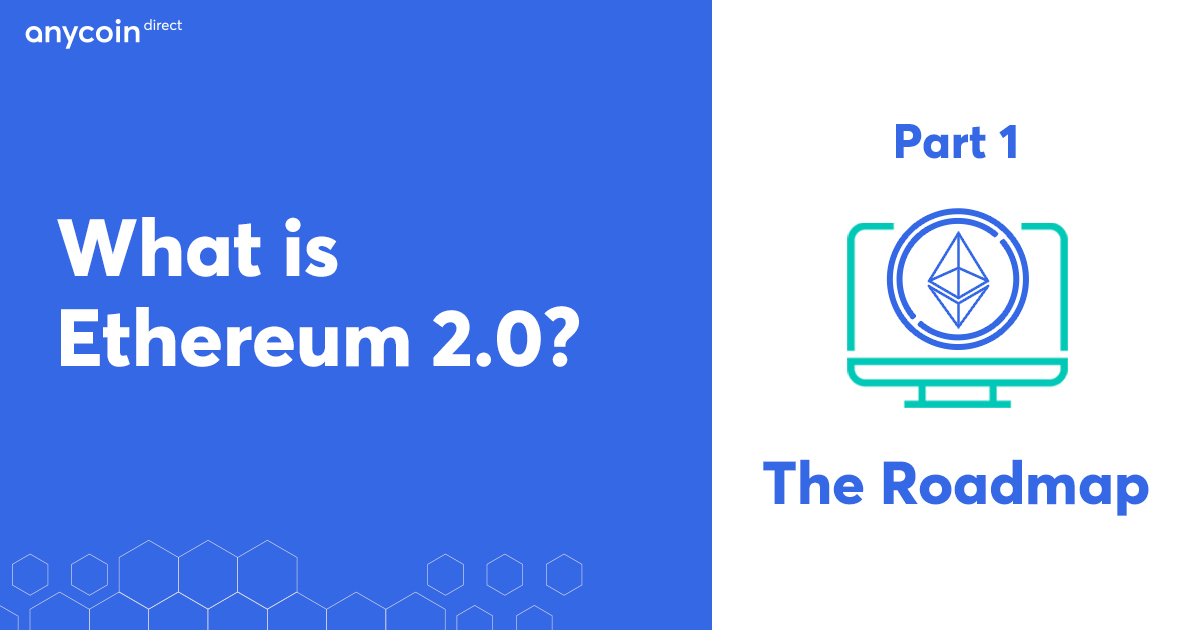What is Ethereum 2.0? - Part 1
- 5 minute read

Part 1: The Roadmap
In Q3 of this year, the highly anticipated Ethereum 2.0 is planned to launch. Also known as Eth2 or project ‘Serenity’, the road to this huge update has not always been easy. Unexpected updates and delays have plagued the project for the last few years. However, with the ‘Muir Glacier’ update in January, Vitalik showcasing his elaborate plans in March and the upcoming Berlin upgrade in Q2, Project Serenity seems ready for deployment.

The end of the beginning
At the start of this year, the ‘Muir Glacier’ hard fork was deployed to prevent more network congestion, making the network faster. This upgrade, in combination with the other essential hard forks (Istanbul, Constantinople, St Petersburg and the upcoming Berlin upgrade), have all been crucial implementations towards the Ethereum 2.0 network overhaul. Once Project Serenity has been launched, everything will be good to go. Right? Not exactly. Ethereum 2.0 has been divided into multiple phases, starting with Phase 0 at the end of this year. With a multi-year roadmap, Ethereum’s goal is to become the world’s computer for the next generation of applications. Today’s article will explain the project’s roadmap and is part of a larger series on Ethereum 2.0.
The four phases
Ethereum has divided its multi-year plan into three known phases, starting with phase 0 in Q3 of this year. Each phase will introduce significant changes to the network and must be deployed in phases. Chances are that multiple phases will be added once the project has been launched accordingly. Below you can find the three phases and a short description of what every phase entails.
- Phase 0: Beacon Chain
In the initial phase, the ‘Beacon Chain’ will be implemented on the network, causing Ethereum to have a Proof of Stake consensus algorithm. The Beacon Chain will manage and store the registry of the network validators. Phase 0 is planned to launch in 2020.
- Phase 1: Shard Chains
With the implementation of basic sharding, Ethereum tackles it’s scalability issues. Currently, every node in the network verifies every transaction. Through basic sharding, the blockchain is split in 64 smaller chains (shards). Reducing the processing of information significantly. Phase 1 is planned to launch in 2021.
- Phase 2: Ether accounts, Cross-shard transfers and EWASM
Phase 2 is not as well defined as the previous two but will entail a lot of quality of life upgrades. Upgrades such as the ability to have accounts, the successor to the virtual machine (EVM) called eWASM (Ethereum Flavored WebAssembly) and the eventual bridge between ETH 1.0 and ETH 2.0. Phase 2 is planned to launch in 2021/2022.
Phase 3 and further
There’s a high chance that Phase 2 won’t be the last one. As the project progresses, upgrades and adjustments will become instrumental. In our next article, we will take a look at every phase and what it entails. Starting off with Phase 0, where we dive deeper into the Beacon Chain and why Ethereum 2.0 has decided to switch to a PoS network.
Read all you need to know in our 'What is Ethereum?' info page!


